Get holafly data before you depart and keep it active in Moscow and petersburg to speed through check-ins and rides. This plan covers key routes and works well through istanbul as a transit hub. within the app you’ll pick a plan that matches your days and data needs, then share the details with a personal travel partner.
Carry cash for restaurants and markets where cards are scarce; though some markets still prefer cash, most places accept mastercard readers. In cities like petersburg and Moscow, card readers appear at hotels, cafes, and stores, while small shops often favor cash. Use approved exchange offices in airports or banks, and keep small bills for tips.
When you book a tour, choose operators that offer clear service terms and multilingual guides. In istanbul transit or while booking online, reading reviews helps gauge reliability. Look for diversity in tour options that fit your schedule and language needs, and verify cancellation policies before paying.
Keep your personal documents within reach and share the itinerary with a friend; this helps every person in your group. Use a safety app to track location and assign emergency contacts. For payments, a spare mastercard can help if you run into issues; avoid carrying large sums of cash at night.
Explore diverse neighborhoods to taste regional cuisine in restaurants, from traditional dishes to modern cafés. In the cities you visit, maintain a steady pace to preserve energy, which helps you cover more sights and enjoy them in context on guided tours.
By combining writing notes with practical tools, you’ll have resources ready for 2025, including transit tips, payment options, and tips to manage diversity of places you visit across Russia.
Visa Resources and Entry Requirements for Russia in 2025
Get your tourist visa support letter through an accredited hotel or travel office today to cut processing time. This letter, along with your passport and photos, speeds the consulate check and helps them verify your stay.
Choose your option: a standard tourist visa with visa support, or an electronic visa (e-visa) where eligible. The standard route requires a visa invitation from a hotel or accredited tour operator and offers a multi-entry path depending on nationality; processing usually takes 4–12 business days, with rush options sometimes available at an extra fee. The e-visa option, if you qualify, lets you apply online via the official platform with no invitation required and is often free; however, it restricts travel to designated regions and time windows.
Documents checklist: passport validity at least six months after planned exit, two visa photos, proof of travel insurance meeting minimum coverage, flight bookings, hotel confirmations or an itinerary, and the invitation or visa support letter if applying for a standard visa. Always scan and upload copies to the platform; keep originals handy at the office for submission. If you are Spanish-speaking or from a country with multilingual guidance, you can usually find instructions in Spanish on the official pages.
Apply steps are straightforward: decide route, gather documents, submit online via the official platform, and pay fees with cards. For a standard visa, you typically apply through a visa center or consulate; some offices accept courier delivery of documents. With an e-visa, print the approval page and carry it with you for border checks.
Privacy and safety: use only official portals over a secure internet connection; avoid sharing credentials with third parties. The official process asks for essential personal data, but you should always monitor privacy controls and limit data exposure. Keep copies of all payments and confirmation numbers to track every step of getting your visa.
Money and payments: most visa centers accept cards, though you should carry some cash for minor fees at bank offices where online checkout isn’t available. For Moscow travel, the Troika card simplifies city transport and can be loaded with money at many kiosks. In addition, plan for currency needs in advance and check which payments are accepted at your chosen hotel or tour operator.
Connectivity and planning: the internet helps you stay on top of rules during holidays and outdoor tours. If you need reliable connectivity, Holafly offers a discreet eSIM option to stay online without roaming charges. It’s a fantastic addition when you’re getting ready to visit Moscow’s kremlins or explore the city walls on a guided tour. Always update your privacy settings when using public networks.
Finally, verify entry requirements for 2025 well before departure. The Moscow kremlins and surrounding walls are popular, but ensure your visa status is valid for your dates and that you can show supporting documents at the airport or border. For the most current rules, check the official consulate office or trusted visa platform in your country to confirm the exact procedures, fees, and how long you can stay.
Visa types and eligibility
Applying online for a standard tourist visa is the fastest path to Russia, and you should start at least 2-3 weeks before your trip. Ensure your passport is valid for six months after your planned return and secure a hotel voucher or invitation from a Russian operator. This approach keeps your preparations on track and helps you lock in travel plans during november when demand can spike.
There are five main visa routes for travelers: tourist, private, business, transit, and e-visa (region-specific). Tourist visas are the most common for leisure and can be single-entry or double-entry, with stays up to 90 days per entry. Private visas require an invitation from a Russian host and are ideal for family or friends visits. Business visas demand a company invitation and can offer longer validity, including multiple entries. Transit visas cover brief layovers and typically allow stays of a few days. E-visas exist for certain regions and operate through an online portal; rules vary by region and can change, so look up the official site for current limits and what the portal allows.
Eligibility basics apply across routes: a passport valid six months beyond your stay; a recent photo; completed application; travel insurance; and the right evidence of purpose (voucher, invitation, or LOI). For e-visas, you will upload or attach a travel plan and sometimes a hotel reservation. Banks statements or proof of finances may be requested to show you can cover your stay. When using private or business routes, you must present a formal invitation (or VL) from a host or company. For online applications, keep fromto fields correct and pre-filled; some forms include a nightsfromper field to estimate stay duration. Prepare scans of documents and ensure they are legible; sure to double-check requirements on the official site. Though rules can vary, the process was streamlined in recent years, and many countrys pages now provide consolidated guidance.
Travel planning tips: plan movements with trains and regional connections; in cities, troikas cards speed up metro rides; maps help you plot routes between historic centers like Moscow and Saint Petersburg. For lodging, many travelers still use resources such as ostrovok to secure accommodation and build a stronger visa package. You want clear proof of where you’ll stay, and arranging this in advance saves time at border checks. Be sure to review requirements with your banks if you must show financial means, and keep a printable copy of your itinerary handy for border officers. If you’re visiting multiple places, the online submission can reflect a single route or multiple stops; you can adjust the fromto dates to reflect your plan.
| Visa type | Eligibility | Key documents | Processing time | Stay/entries | Notes |
|---|---|---|---|---|---|
| Tourist visa | Leisure travel to Russia; voucher or hotel invitation; continuous purpose documented | Passport, photos, filled application, hotel voucher or invitation from operator, travel insurance, payment receipt | 5–20 business days | Single or double entry; up to 90 days per entry | Online applications possible in some countries; check the official portal for current rules |
| Private visa | Visit family or friends; invitation from a Russian host | Passport, photos, invitation letter from host, completed form, insurance, funding evidence | 2–3 weeks | Typically single or double entry; up to 90 days total | Not always easy to obtain; host may need to register with local authorities |
| Business visa | Meetings, conferences, or negotiations; company invitation | Passport, photos, invitation letter (VL) from Russian company, business itinerary, insurance | 5–15 business days | Multiple entries; up to 1 year in some cases | Often requires a letter of invitation from the requesting company; track your LOIs |
| Transit visa | Transiting through Russia with no immediate entry | Passport, photos, confirmed onward travel, visa for next destination if required | Short; typically 3–5 days | Single entry; short stay | Not needed if you stay in the international transit zone and hold onward tickets |
| E-visa (region-specific) | Regional travel under program rules (e.g., Far East) | Passport, photo, travel plan, accommodation details, insurance | Varies; usually 3–7 days after submission | Typically single entry; stay limits depend on region | Apply via official online portal; rules and availability change by region |
Required documents by visa category
First, prepare the full document package for your visa category before booking. This helps with comparing options from official service providers across countries, and keeps travellers moving toward entry into Russia. Include more documents that cover every requirement, from invitation numbers to proof of funds, so you avoid delays on monday or sunday when offices are closed. This approach helps you understand that you must submit the right documents and where to submit them. Expect a processing range of a few days to two weeks, depending on the consulate, and a smoother traveling experience.
Tourist visa – Passport valid at least six months after planned departure; two recent colour photos; a completed visa application form; an invitation from a hotel or visa-supporting tour operator; proof of accommodation (booking confirmations); a travel itinerary with dates; return or onward tickets; medical insurance valid in Russia for the stay; proof of funds (recent bank statements or credit card limits); and a photocopy of the passport data page. If you stay with a private host, include their details and an invitation letter. Some consulates require an official invitation from a hotel or tour operator. For entry into Russia, carry the invitation or booking reference and the relevant address. For a week-long trip, keep an updated hotel record for the full period, and note any entertainment plans you plan to pursue during your stay.
Business visa – Passport validity six months beyond stay; two photos; filled application form; invitation from a Russian company on official letterhead; company details and a contact person; a letter from your employer or sponsoring organization; hotel booking or address in Russia; travel itinerary; proof of funds; and medical insurance valid in Russia. Some offices require a visa-support voucher from an official service. Provide copies of corporate registration and a concise business plan or agenda to help the officer understand your purpose. Entry documents should align with the dates on the invitation and hotel bookings.
Private (private/family) visa – Passport validity and photos as above; completed form; official invitation from a host in Russia (including host’s name, passport number, and city); proof of relationship; travel itinerary and accommodation details; host’s address and contact information; return or onward ticket; medical insurance. If you request multiple entries, attach the host’s invitation for each stay window. This category often needs extra evidence about the visit purpose and financial support from the host.
Student visa – Admission/acceptance letter from an accredited Russian institution; official invitation or visa-support letter; passport; two photos; completed application; proof of accommodation and funds for tuition and living costs; bank statements or sponsor letter; medical insurance valid in Russia; course details and start date; transcript or diploma; translation of documents if required. For week-long programs or weekend intensives, ensure the invitation covers the entire study period. Ensure the institution provides a formal enrollment letter listing your program and dates to smooth submission.
Transit visa – Passport; visa for the final destination if required; proof of onward travel (air or rail tickets); transit itinerary; and any required documents for the destination country. In some cases, you may not leave the airport; check whether an entry permit is needed for your transfer and whether you need a hotel booking to cover overnight stays if you do leave the transit zone.
Work visa – Passport; two photos; completed application; employer-provided job contract or invitation; work permit or labor authorization; official letter from employer; address in Russia; hotel booking or accommodation details; medical insurance; proof of funds if required; migration card upon arrival; and tax ID or employer registration numbers as requested. Some consulates request a criminal background check or a certificate of no impediment. Coordinate with your employer on the exact dates and the regional consulate to ensure consistency across documents.
Other visa categories and alternatives – For humanitarian, cultural, medical, or journalist visits, attach any official accreditation, invitation letters, or mission orders from the relevant Russian authorities. Submit color copies and translations where needed, and keep originals handy. If the standard invitation is not available, ask your host or partner for an alternative invitation through an accredited agency. Some consulates accept electronic invitations or e-visas; verify the current rule on the official portal to avoid delays. Where you apply, present documents in person or via a verified service, and keep proof of submission for your records.
Where to submit applications: consulates, embassies, and online portals
Submit your visa application through the official portal of the consulate that serves your country to keep the process clear and to see status updates easily. This path reduces back-and-forth, helps them process documents faster, and lets you know where you stand at every point.
- Consulates (in-person submission)
- Where to go: the consulate that covers your locale or the nearest branch.
- Opening hours: typical windows are Mon–Fri; some locations offer Sunday slots by appointment.
- What to bring: your passport, two photos, invitation or hotel confirmation, financial proof, travel itinerary, and a free sample checklist you can fill in.
- Processing window: expect up to a week-long timeline when documents are complete; complex cases may extend beyond that.
- Tips: carry copies of every document for them, and keep originals secure for your return.
- Embassies (headquarters and consular desks)
- Role: handles interviews, special cases, and final decisions; some posts offer quick returns on ordinary cases.
- Tips: book interviews in advance, arrive early, and bring a spare set of documents.
- Locations: Moscow often serves as a central hub; regional posts handle nearby applicants.
- Online portals (fastest and most convenient)
- What you get: a guided form, document uploader, fee payment, and real-time status tracking; processed updates show you exactly where you stand.
- Payments: some portals list t-bank as a payment option; others accept cards or e-wallets.
- Documents: upload scanned copies of passport data page, photo, invitation, and sample documents; keep originals handy for the interview.
- Accessibility: apply from yerevan or any city with internet; many sites support Sunday access and offer a debut online flow that minimizes errors. Lets you plan and move forward with confidence.
- Connectivity: if you use esim for communications, ensure the number matches the portal’s contact field to receive alerts about status updates.
- Diversity of options: you can choose the route that fits your schedule, budget, and group size (class1st travel groups often benefit from online batching).
Useful tips for a smoother path: planning ahead reduces friction, and getting documents ready in a single pass helps them stay under a minimal processing load. If you’re traveling from there to moscow or planning a return from yerevan, verify each site’s requirements and note any region-specific steps. A well-organized packet–passport, photos, invitation, financial proof, and insurance–speeds things up and lowers the chance of delays. For travelers seeking guidance, guides and sample forms are available from trusted sources, and istoshnik sources (источник) often provide a clear reference set you can reuse.
Sample checklist ideas and free resources are commonly posted on official portals and embassy pages, so you can review them before opening your application. The whole process becomes less stressful when you know where to submit, what to prepare, and how to track progress; this approach is amazing for traveling to Russia in 2025 and beyond.
Processing times, costs, and application tracking
Apply early and set tracking alerts to avoid delays. For most travelers, start 2–4 weeks before departure; during november peaks, allow 4–6 weeks and monitor the status every few days.
Processing times vary by route. Tourist visas via consulate typically take 4–7 business days after submission for standard handling; expedited service reduces to 2–3 days where available. Online e‑visas or visa exemptions offered to some nationalities may process in 3–5 days, with automatic status updates by email or portal.
Costs depend on visa type and nationality. Typical consular visa fees run roughly from 35 to 80 USD for a single‑entry tourist visa; service fees from agencies range 25–60 USD, plus any courier charges. If you qualify for an online e‑visa, the fee is usually lower, commonly 6–60 USD depending on country. Travel insurance adds 20–60 USD for a basic coverage period; factor higher premiums for long trips or outdoor activities. For meals and essentials, plan a modest daily budget for shops and street food to keep costs predictable.
Keep your reference number handy and use the official portal or the agency dashboard to track progress. You should receive status updates by email and in your account, including when documents are received and when a decision is made. If you applied via a travel service, they commonly notify you of any required actions or missing forms; responding quickly keeps the whole process moving.
Create a basic checklist to prepare before applying: passport valid at least six months beyond your stay; at least two blank visa pages; a recent photo meeting requirements; the visa form completed; supporting documents such as flight bookings and hotel reservations (ostrovok is convenient for hotels); travel insurance; and a letter of invitation if required. Those items travel with you–entry stamps, booking confirmations, and a simple day plan for your couple of weeks help. This approach lets you complete the form accurately and speeds tracking.
For lodging, use ostrovok to lock in hotels with clear cancellation terms. If you travel as a couple, gather both names on bookings and receipts to support your form. Prices shown on major sites start from around 60 USD per night, nightsfromper november, on ostrovok and similar sites.
Travelers who visited other countries or hold multiple visas should track each application separately. Keep essential documents ready, including passports, photos, and hotel confirmations. If you booked via ostrovok, keep a link or receipt handy as part of your itinerary to support your entry. A quick-access folder on your phone with insurance, flight details, and hotel confirmations helps at checkpoints and during transit.
Certain countries have restrictions; verify that your form includes the correct visa type, especially for entry into Russia. Check with your travel service to confirm what you need for your visited countries’ regulations; you may need to show proof of funds or insurance.
Alternative entry options: e-visa and invitation letters
Choose the e-visa as your first option if you want speed and clarity; for a couple travelers it offers a better balance of time and handling for a current trip window. Prepare your basic facts in writing: full name, passport number, and birth date, then check eligibility. This option keeps entry simple, with minimal calls and visits to offices, which saves time and reduces stress.
What you need for the e-visa is a valid passport, a digital photo, and an online form submitted on the official site. Processing typically takes a few days, but open windows vary by region; you should monitor the current status. You pay with major cards or online payments and print the approval to carry at border. For many destinations, a return ticket isn’t required, but you must be ready to show a plan of stay and accommodations. Ask which class applies to your trip, and ensure the approval matches the purpose.
Invitation letters work well if you prefer a more traditional route or plan a longer stay. A host can issue a visa-support letter or you can book a hotel that provides a formal invitation. Arrange this in advance and verify it covers your travel dates, passport details, and city you plan to visit such as novgorod or other destinations. The letter should identify the person inviting you and include contact details; combine this with a copy of your itinerary to avoid confusion during the admission checks.
Compare costs, time, and flexibility: e-visas fit travelers seeking a quick entry, while invitation letters suit those who want to stay longer in a major city or explore multiple towns; both options open access to classic experiences, from a sunny day in a fine restaurant to a quiet evening with caviar and local food. Travel with unity with your partner, and check popular venues in advance; book a ticket where possible to avoid queues. Pack a spare phone, keep payments ready, and plan your entertainment in advance so you won’t miss popular venues. If you lose a document, stay calm and follow the steps for re-issue; always have a backup copy and a digital version.
In short, choose the option that fits your current plans, time budget, and the person traveling with you. The alternative paths offer reliable routes to travel, and you can switch between them depending on how your trip develops. After you secure the entry document, book your major destination, confirm the return flight, and keep the ticket handy. This approach keeps you open to changes and avoids unnecessary stress during the journey.
Common pitfalls and tips to prevent delays
Book visa processing and travel insurance at least four weeks ahead to prevent delays.
Aim for a perfect balance of outdoor and indoor activities to keep pace and avoid burnout.
Then follow these concrete steps to keep plans smooth:
- Bank and payments: contact your bank to enable international online and mobile payments, set travel notifications, and confirm card acceptance at ATMs in russias capitals; carry a backup card and some cash in local currency.
- Mobile and connectivity: reserve a local mobile plan on arrival or before departure, install yandex maps and translate tools, and save offline routes for the city you’ll visit.
- Opening hours and tickets: check the opening hours of major attractions and museums in advance, and book popular excursions and entertainment online to avoid queues.
- Getting around and transit options: map your route from the airport to your hotel, choose metro or taxi options with reputable providers, and leave buffer time for transfers between points.
- Accommodation and location: pick hotels near your top interests to cut travel time, verify opening times for hotel services, and read recent guest reviews for reliability.
- Food and safety: prefer established eateries with fixed menus or clear prices, carry small cash for tips if needed, and test a few reliable local spots early in the trip.
- Documentation and insurance: keep digital copies of passport, visa, and insurance; verify visa validity and hotel confirmations; store contact numbers for emergency assistance.
- Class1st travelers: for first-time visitors, pace your day, avoid cramming, and mix outdoor and indoor options to keep energy steady.
- womens safety and travel gear: carry a compact bag with ID, a phone backup, and a quick-access contact card; travel in groups when possible and use trusted transport options rather than street touts.
- Debut tip for going long distances: if you are debut traveler, begin with lighter days and gradually add activities as you gain confidence; this helps getting around without delays.

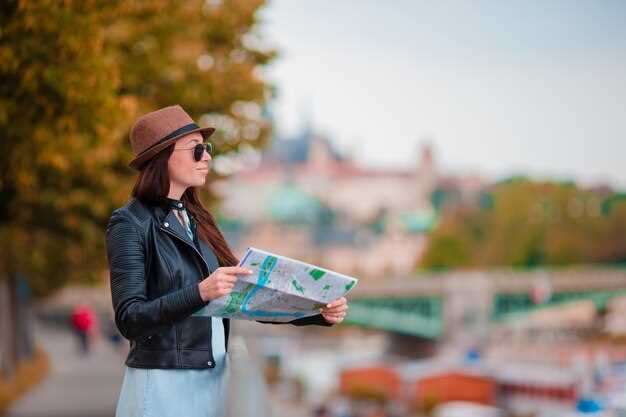 Resources for Traveling to Russia in 2025 – A Practical Guide with Everything You Need">
Resources for Traveling to Russia in 2025 – A Practical Guide with Everything You Need">


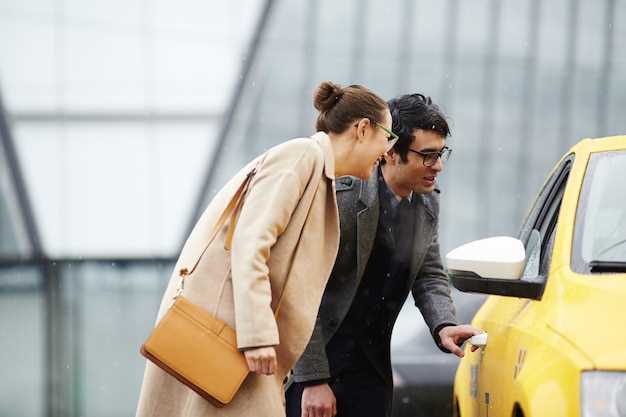 Taxis in Russia – How Not to Get Ripped Off – Essential Tips for Travelers">
Taxis in Russia – How Not to Get Ripped Off – Essential Tips for Travelers">
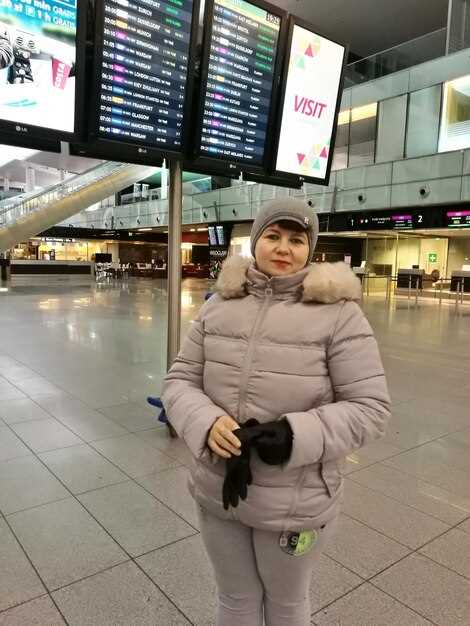 Domodedovo Airport Guide – Flights, Terminals, and Transport in Moscow">
Domodedovo Airport Guide – Flights, Terminals, and Transport in Moscow">
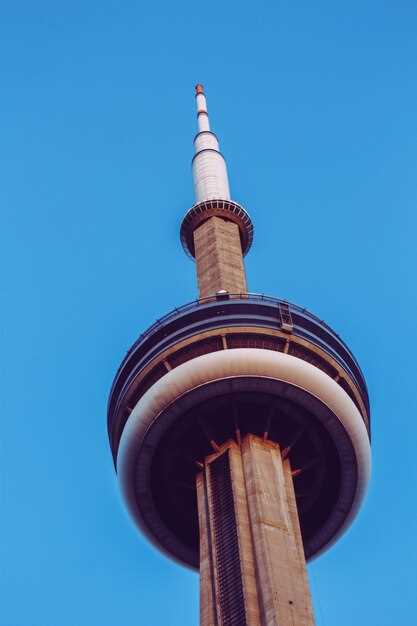 Ostankino Tower Moscow – Ultimate Guide to Russia’s Tallest TV Tower">
Ostankino Tower Moscow – Ultimate Guide to Russia’s Tallest TV Tower">
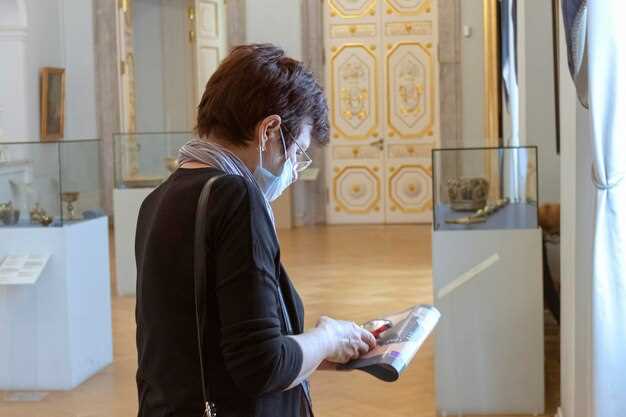 Pushkin Museum – A Comprehensive Guide to Moscow’s Fine Arts">
Pushkin Museum – A Comprehensive Guide to Moscow’s Fine Arts">
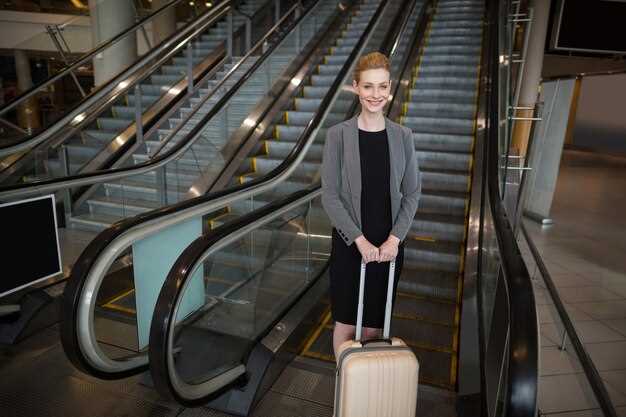 Domodedovo Airport DME – Russia’s Second Busiest Airport – Flights, Facilities & Travel Tips">
Domodedovo Airport DME – Russia’s Second Busiest Airport – Flights, Facilities & Travel Tips">
 10 Main Facts About the Cathedral of Christ the Savior in Moscow">
10 Main Facts About the Cathedral of Christ the Savior in Moscow">
 Moscow’s Main Street – From Stalin’s Death to Devastating Violence">
Moscow’s Main Street – From Stalin’s Death to Devastating Violence">
 Civitatis Reviews, Contact Details, and Practical Information – A Traveler’s Guide">
Civitatis Reviews, Contact Details, and Practical Information – A Traveler’s Guide">
 Great Patriotic War Museum – Guide to Exhibits and Visiting Tips">
Great Patriotic War Museum – Guide to Exhibits and Visiting Tips">
 Cosmonautics Museum – Explore Space History, Exhibits, and Interactive Experiences">
Cosmonautics Museum – Explore Space History, Exhibits, and Interactive Experiences">